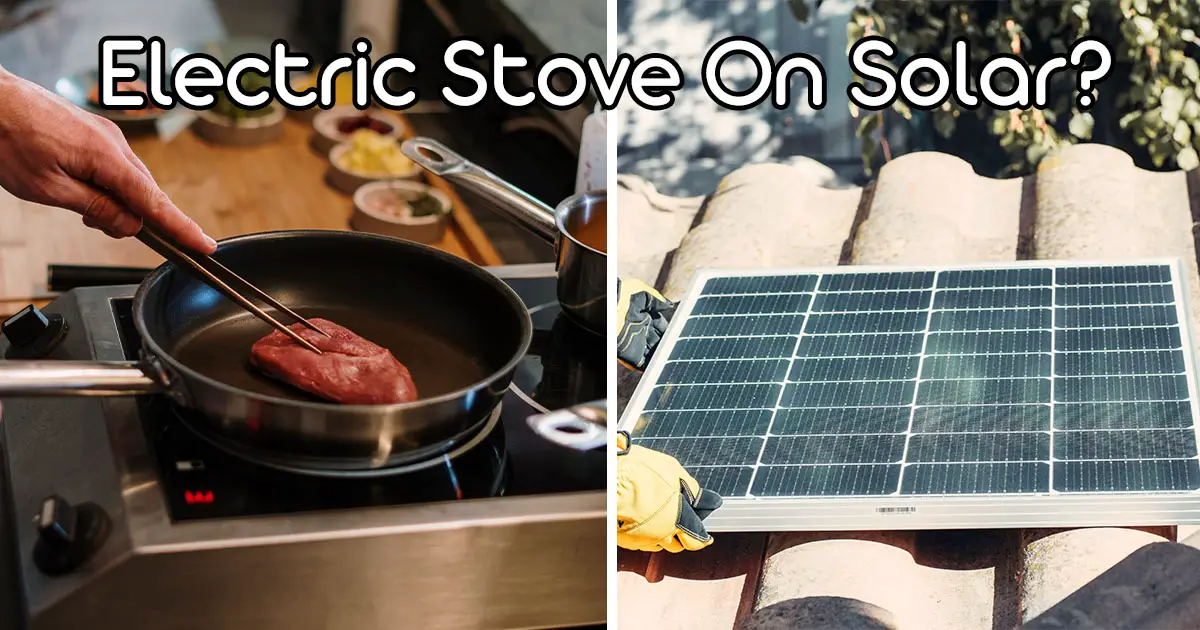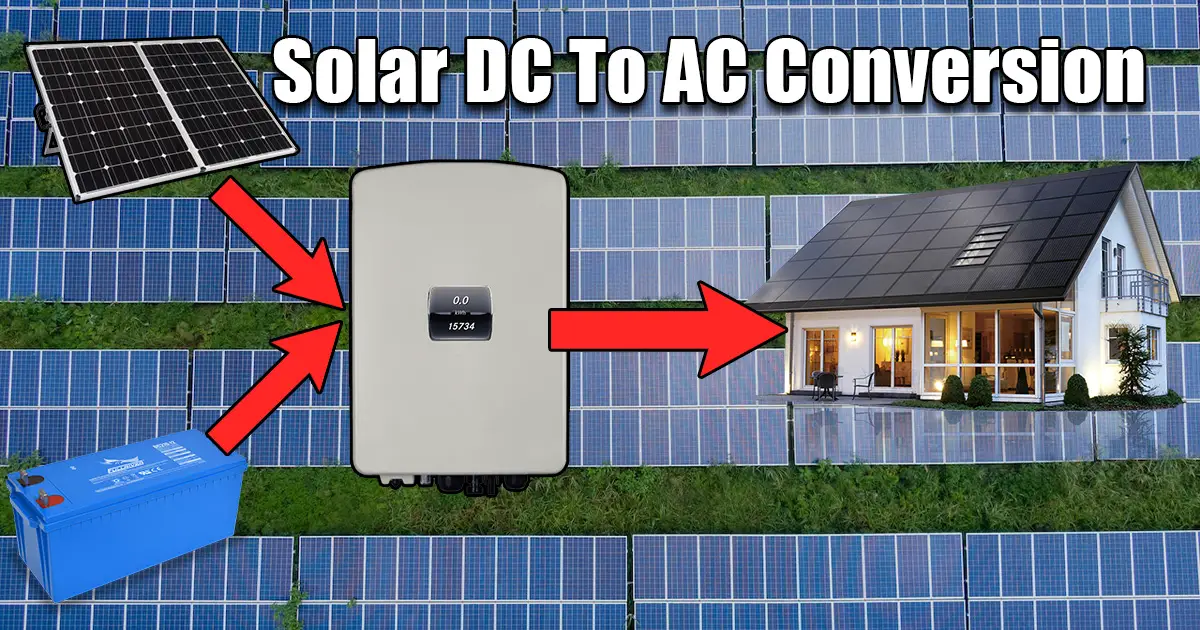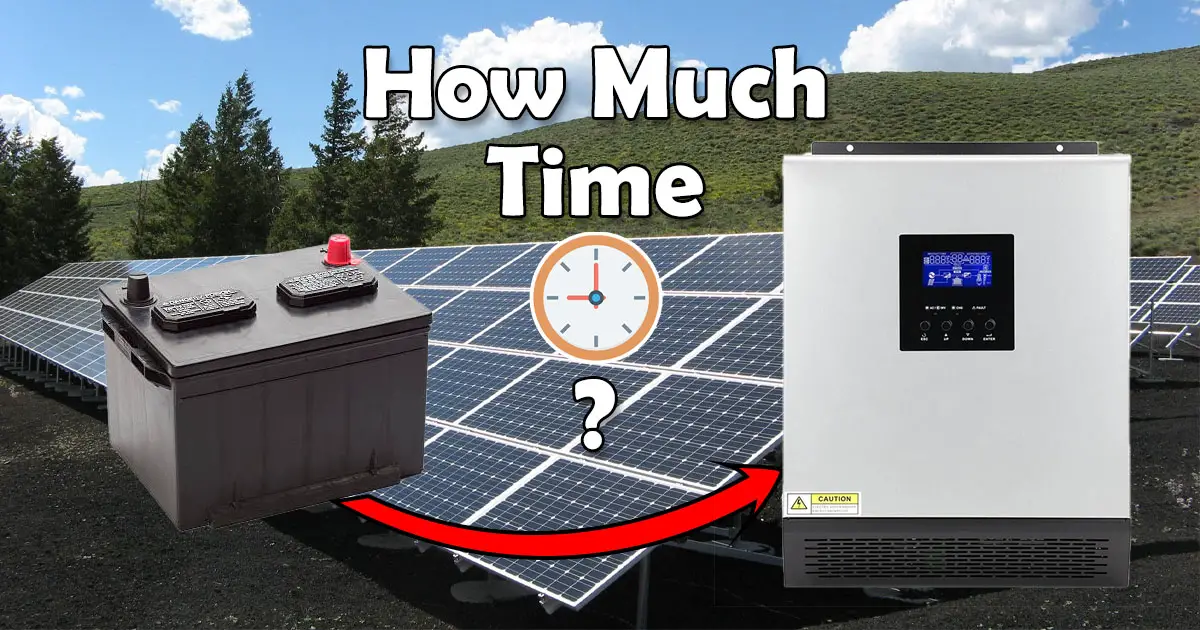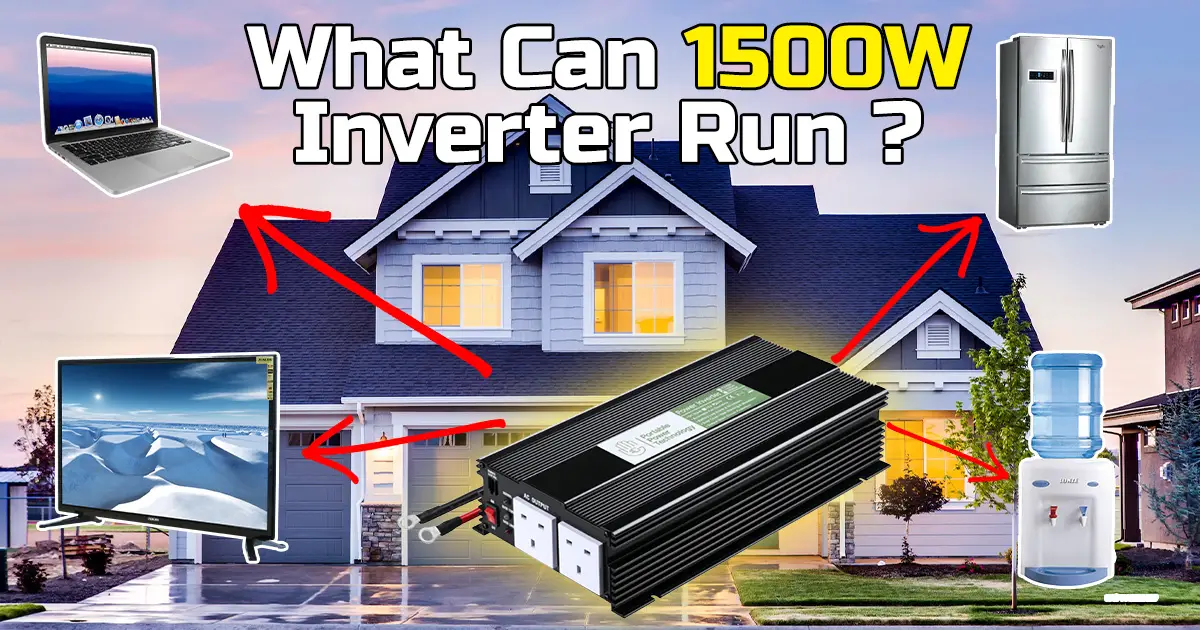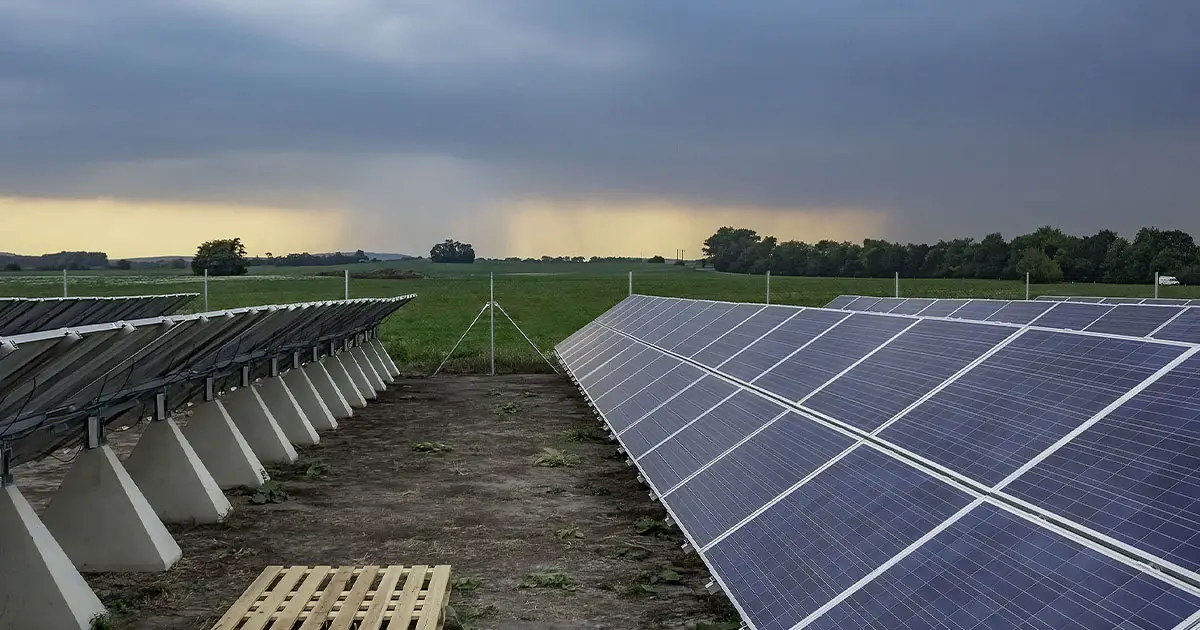An electric stove is a great alternative to a gas-powered stove. It doesn’t require continuous replacement of the gas cylinder tank or maintenance of the gas pipes. It is even cleaner and safer for house usage. Moreover, if the electric stove is powered by solar power, you will be saving a lot of money on the monthly gas bills. With the increase in natural gas prices worldwide, cooking using a solar-powered stove is the optimal solution.
However, the questions that might arise are: Can solar power run a stove? How many solar panels do you need to run an electric stove?
As a general rule, you will need between three to four solar panels of 400 watts each to power an electric stove. Electric stoves consume between 1000 – 3000 watts depending on the model. On average, each hot plate consumes 1300 watts.
Now, this is how much you need to power an electric stove that consumes 1300 watts per plate and by running just one plate. However, if your electric stove model does consume more, or you are going to power more than one plate at the same time, you might need more solar panels. Moreover, we assumed here that you will be using the stove just in the morning when the sun is bright, but if you are going to use it at night, things will differ. Let’s find more.
Electric Stoves Power Consumption

Each electric stove model has different specs that provide the “king” data in our calculations and determining the number of solar panels needed to power it. It is the wattage. How many watts does my electric stove consume? How many watts does each of the hot plates or the elements consume?
The following table shows a small comparison between 4 popular electric ranges. The range is an electric stove and an electric oven (2 in 1):
| Electric Range Model | Power For Each Element (Plate) | Average Power Per Element (Plate) |
|---|---|---|
| Frigidaire Gallery 30” | 1200W, 3000W, 1200W, 3200W, 1200W | 1960 Watt |
| General Electric 30″ | 3100W, 1200W, 3000W, 1200W | 2125 Watt |
| LG 7.3 cu. ft. | 1200W, 3000W, 3200W, 1200W | 2150 Watt |
| Samsung 6.3 cu. ft. | 3000W, 1200W, 3000W, 1200W | 2100 Watt |
Taking a look at these numbers we see that the plate power consumption varies from small (1200W) to large (3200W). You have to know exactly how much power your stove consumes and how much power each element/plate consumes. You must also determine which plate(s) are you going to use. Are you going to use just one large plate (3200W)? Or maybe one small (1200W) and one large (3200W)?
These questions are critical to answer and you must decide your usage before proceeding with the calculations of the needed solar panels.
How Many Solar Panels Are Needed To Run An Electric Stove?
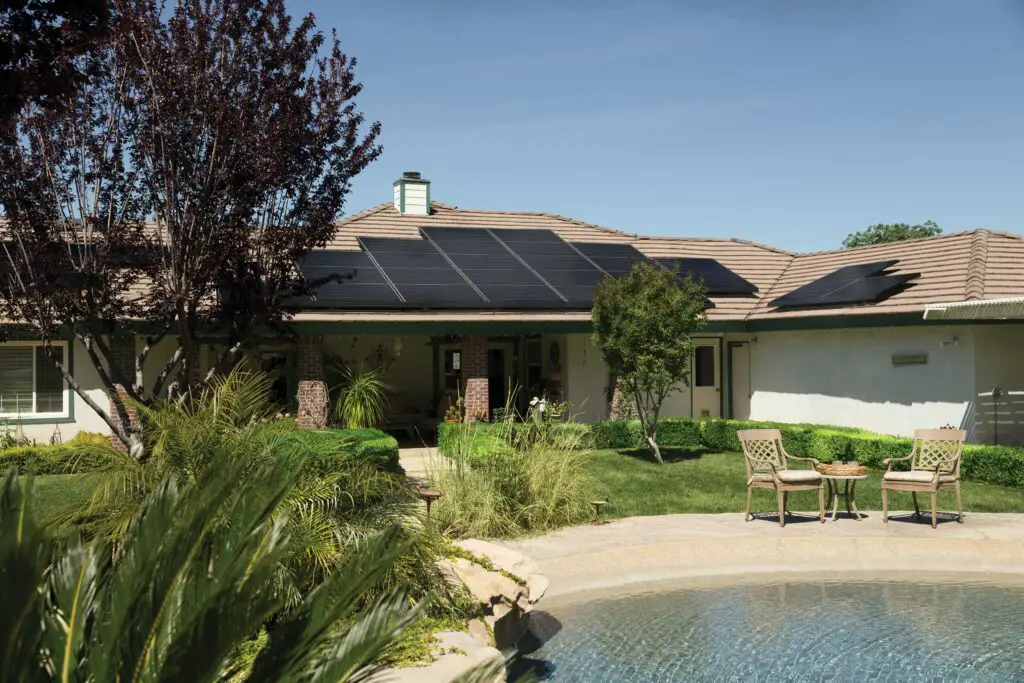
After determining the needed stove model and knowing how much power each plate consumes and which plate(s) are you going to use, it’s time now for the hard work. In my example, I will choose the Samsung range, and I will be using two plates, a small one (1200W) and a large one (3000W).
After that we will calculate the total needed power for running these two plates, taking into account the losses that will occur in each part of the system. Let’s consider the following losses in our system:
- 90% Inverter efficiency = 10% loss
- 95% Solar controller efficiency = 5% loss
- 2% Wiring losses
- 5% Environmental losses (Temperature, dust, shading, etc…)
This gives a total loss of 22%.
Total Power (W) = Power Consumption (W) / ( 100 – Losses ) %
Total Power (W) = ( 1200W + 3000W ) / ( 100 – 22 ) %
Total Power (W) = ( 4200W ) / ( 0.78 ) = 5385 W
So the total needed power after considering the losses by the solar panels is 5385W. Now the next question is how many panels do I need to get this amount of power? Well, this depends on the solar panels you are willing to buy or that are available for you to buy. In my example, I will be using 400W solar panels.
Needed Solar Panels = Total Power (W) / Solar Panel Wattage (W)
Needed Solar Panels = 5385W / 400W = 13.46 Panels
Of course, I can’t buy 13 and half solar panels, so we will round up this number to get 14 solar panels. We will need 14 400W solar panels to run the two plates of the stove during the sun time. However, we can’t run the stove at night by this setup alone, we will need batteries.
How Many Battery Is Needed To Run An Electric Stove?
This question is answered depending on multiple factors. How many hours do you need to power the electric stove at night? What is the power consumed at night, is it different from the day? And how many backup days (days of autonomy) do you need to keep in your batteries? In my example, I will need to use the large plate of the stove (3000W) for half an hour to make the dinner, and maybe about 15 minutes using the small plate (1200W) to make some coffee/tea/hot chocolate.
Let’s now calculate the power needed to be stored in the batteries and consider the losses:
Stored Power (Wh) = Power Consumption (W) x Operating Time (h) / ( 100 – Losses ) %
Stored Power (Wh) = ( 3000W x 0.5h + 1200W x 0.25h ) / ( 100 – 22 ) %
Stored Power (Wh) = ( 1800Wh ) / ( 0.78 ) = 2308 Wh
So this means that I need every day 2308Wh to be consumed from the battery bank. So does this mean I need just 2308Wh of battery capacity? No. This really depends on the battery type you choose and the depth of discharge % (DOD %) of your battery. For example, I will choose a lithium-ion battery that has a DOD of 90%. This means I could use 90% of the stored power in my battery bank. Not let’s calculate the actual power needed to be stored:
Total Stored Power (Wh) = Stored Power (Wh) / DOD%
Total Stored Power (Wh) = 2308Wh / 0.9 = 2564Wh
Now that we know the total power needs to be stored in the battery bank it’s time for determining the number of batteries needed and the battery’s capacity. This process depends on the type of the inverter you choose and the voltage this inverter uses (12v, 24v, etc…). So for my example, I will need at least a 5.5kW inverter to be able to handle the 5385W supplied by the solar panels. This type of inverter usually is designed to handle 48-volt batteries, and I will be using 200Ah batteries to store the power since this storage is the most available for me (your case might be different).
Batteries Capacity (Ah) = Total Stored Power (Wh) / System Voltage (V)
Batteries Capacity (Ah) = 2564Wh / 48V = 53.42Ah
So I need a battery capacity of 53.42Ah to run the stove at night for one day. But I must have backup days in case of a storm with cloudy days and almost no sun for a couple of days. Let’s say a backup of three days:
Total Batteries Capacity (Ah) = Batteries Capacity (Ah) x Backup Days
Total Batteries Capacity (Ah) = 53.42Ah x 3Days = 160.26Ah
So this means that I need a battery of 160.26Ah capacity and 48V. Of course, I will not find a 160.26Ah battery on the market, so I will choose the nearest which is a 200Ah 48V battery. Or you might choose to have 4 batteries of 50Ah capacity (160.26Ah / 50Ah = 3.21 = 4 Batteries) and 12 volt. In this case, you will have to connect the 4 batteries in series to have total voltage of 48v (12v + 12v + 12v + 12v).
Electric Stove Solar Power Calculator
To wrap up all that you have read in this article and to make the calculation process easier for you we have created the following calculator. You will have to enter the wattage for the plates that you will be running in the morning, you have a button to add multiple plates of different power.
After that, you will have to enter the plates that you will be using at night along with the duration in minutes or hours. You will also have a button to add multiple plates of different power. Then you will enter the battery details, the system voltage, the solar panel’s power (W), backup days, and the individual battery capacity.
At the end of the calculator, you will have the results section which will have the needed amount of solar panels, the battery capacity needed, and the number of batteries needed depending on the individual battery capacity you choose.

